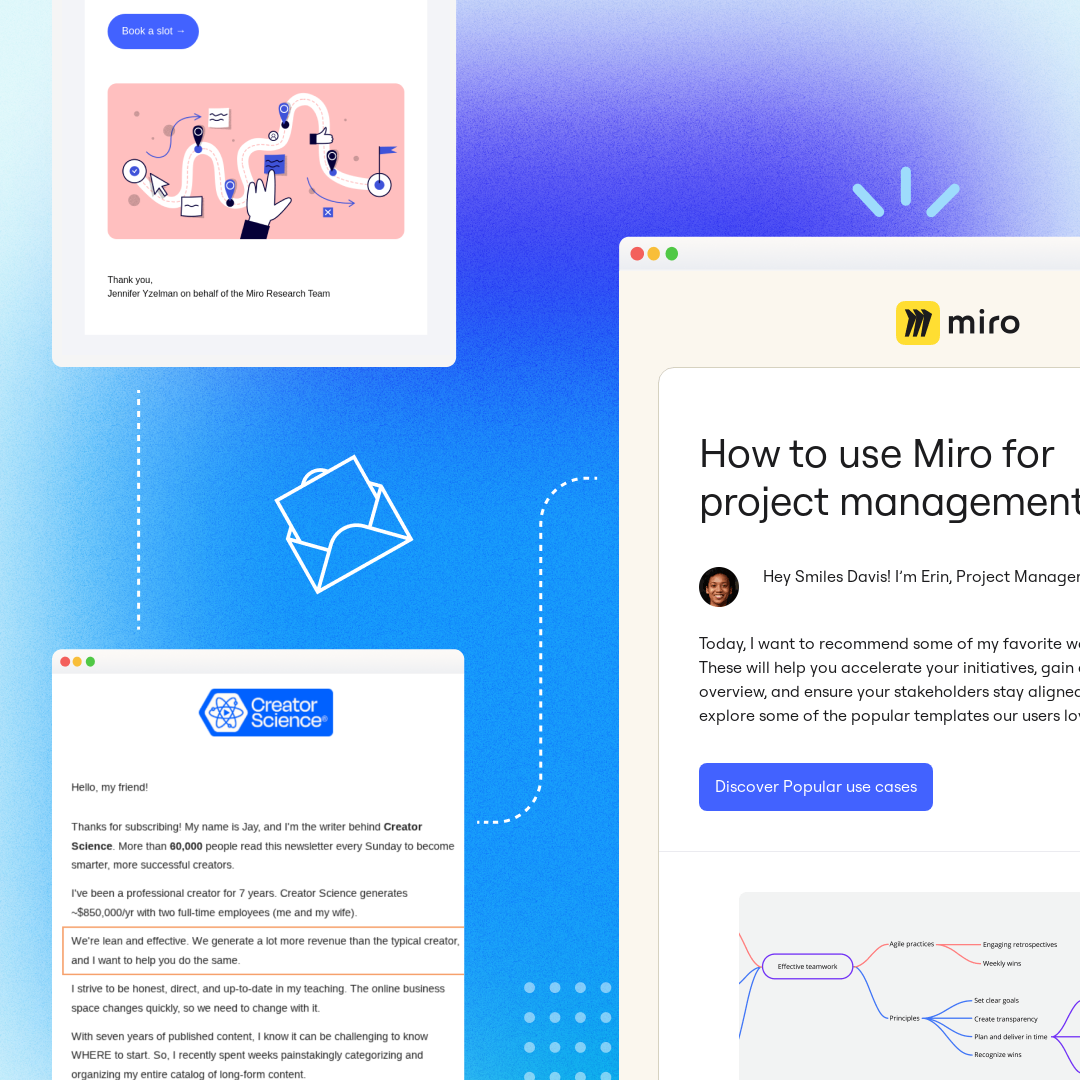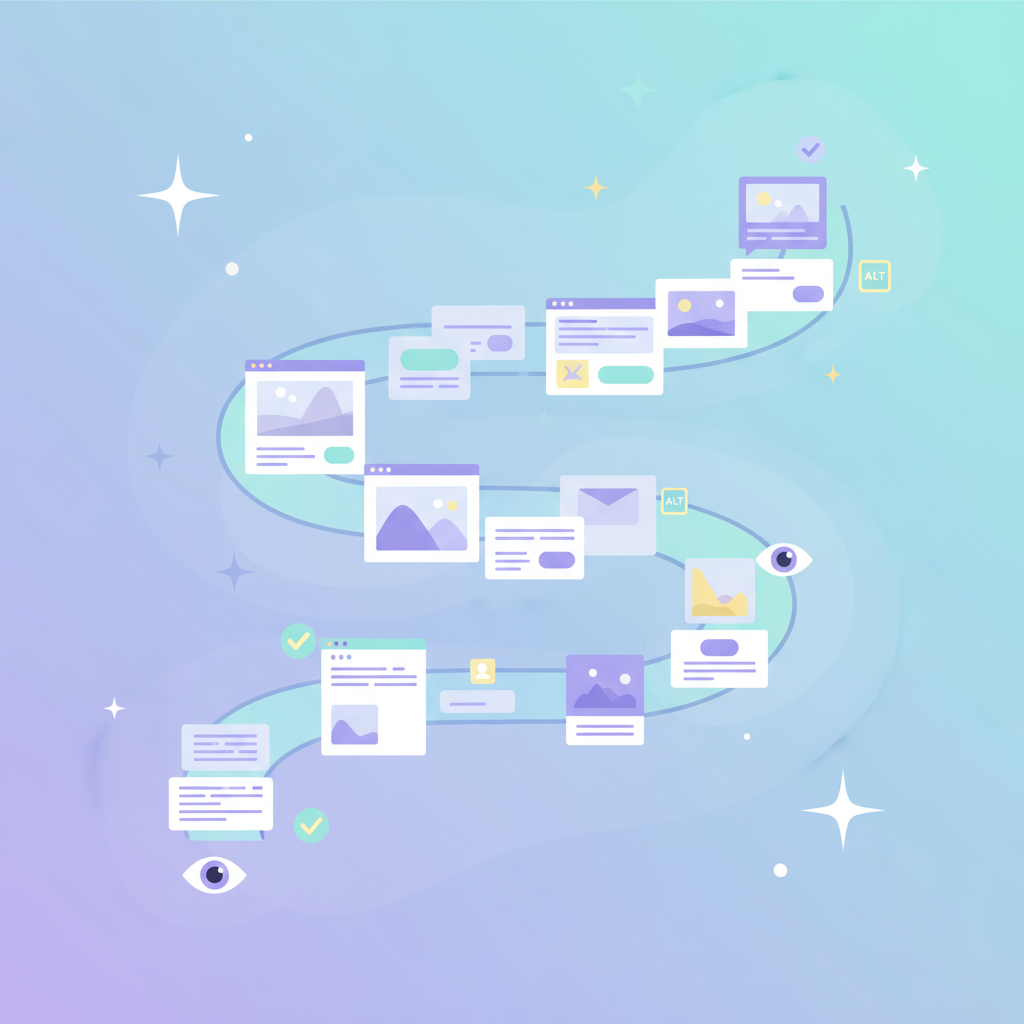
Why aren't people reading my emails?!
You just sent a very important email communication to a group of stakeholders. And you know its good and thorough. Everything anyone would need to know about this very important topic is in that very important email is there. I mean, you're not a copywriter, but who out there iswriting emails like a copywriter?Your focus is to be as detailed as possible. And every detail is right there. In the email that you just sent. To everyone who needed it.But somehow, the questions are rolling in. Silly questions. Questions that were clearly answered in that very thorough, very detailed, very important email communication.You're probably wondering "why does it have to be so frustrating?" and "why does this happen every. single. time."Maybe you work in Human Resources or Higher Education, or maybe you're the leader of a certain project or initiative. Whatever your specialty, you know you're a smart person with an important responsibility. You don't even hate compiling the information. It's part of the job.However, fielding a bunch of questions you've already answered is plucking your last nerve.Questions like:
- "What's the deadline for…" project you just sent the deadline for
- "How do I…" do a thing that was clearly explained
- "Where do I locate…" info that is definitely in the email
You know... the email they never read.You don't deserve all that grief! So I've got some tips for you. While you're not a copywriter (and you don't have to be!), it shouldn't be difficult to get to at least read or engage with your emails, so here are some copywrite fundamentals to apply to your email communications that will stop those annoying questions from coming in.
Copy Fundamentals for Writing Emails Like A Copywriter
Pro copywriters don't just communicate–they aim to elicit action. And they're often held accountable for the quantifiable success of their work. A lot is on the line when a pro copywriter takes to the keyboard!Writing emails like a copywriter requires an understanding of your audience and an emphasis on what they would perceive as valuable or beneficial. So put yourself in your readers’ shoes and ask, “What’s in it for me?”Also, consider the medium. The email channel in particular presents unique challenges, and these four tips can help you get your content up to snuff for more effective communication in the inbox.
1. Understand the Challenge
According to Statista "email volume increases globally every single year." We’re all inundated with welcome and unwelcome email messages. We find select emails useful and important, while other messages feel irrelevant, redundant, or just blend in with all of the other inbox noise.And email goes wherever we go. A report by HubSpot states that 41% of emails are access on mobile devices.So you’re not just competing with every other email in the inbox, you’re also competing with a myriad of external distractions like texts and social media apps. Marketers know it’s tough to stand out in a crowded inbox, and even more difficult to capture attention when email recipients are on the go.See more:Email Design for Mobile: Best Practices to Take Your Marketing Emails Up a Level
2. Focus on the subject line
You’re probably putting loads of effort into your email body, but subject lines are often an afterthought. And that’s a big mistake. Here’s why:Nobody reads an email they don’t open.An effective subject line entices engagement. So think about how you could do a better job of drawing attention to your message.A common error is to choose a certain formula for your subject line and then apply it every single time. Consistency seems good in theory, but after a while, folks just glaze over it.The secret to subject lines that sizzle is unpredictability. So mix things up! Make each subject line wildly different from the last. Here are some ways to do that:
- Try really short subject lines, then really long subject lines.
- Drop in an emoji every now and then.
- Experiment with different psychological tactics. Some subject lines can be very direct. Others might capitalize on a sense of curiosity to find out what’s inside.
- Be offbeat or funny. Wholesome jokes that resonate with your audience will definitely score an open.
- A sense of urgency—when used sparingly and appropriately—can also be effective. Just be careful not to overdo it.
3. Make It Scannable
Your audience should be able to quickly skim your message to get the key points. Content is most consumable when it has some visual hierarchy.Organize ideas into sections and subsections with bold headers. Bulleted lists are great, too, for making content more digestible. And be certain paragraphs aren’t dense walls of text.Another tip is to use one-sentence paragraphs to draw attention to important points.See what I did there? Of course you did!
4. Keep It Short & Sweet & Zombie-Free
Powerful copy eliminates unnecessary words. So consider how you can make all of your important points with fewer words.This article from Dr. Nadia Bashir, an expert copywriter who leverages her PhD in psychology to create persuasive content, has loads of terrific tips on keeping copy short and sweet. Take the time to give it a full read if you really want to level up your copy game.And there’s one tip I would add: The importance of writing in the active voice for clear, to-the-point communication.The opposite of active voice is passive voice, which is a clunky writing style that adds unnecessary bulk to your copy. But if you’re not a grammar nerd, it can be tough to tell the difference. So that’s why you have to give your content the zombie test!Here’s an example of a couple of sentences written in the passive voice:

To give this copy the zombie test, add the phrase “by zombies” after the verb:

Zombies are no good and you don’t want them in your email copy! So if you are able to add them, then you have written in the passive voice, and there’s an opportunity to be more direct and clear with the active voice.
Take it to the next level with an HTML email template
Now that you have the tools to start writing emails like a copywriter, it's time to take it one step further. Think about making your email communication visually stunning as well! Beefree.io offers the world’s biggest collection of free, professionally designed email templates for any use. With over 1,500+ to use, I guarantee you'll find something for any occasion.Best of all, no coding experience is necessary with the easy-to-use drag-and-drop interface.Happy sending!



